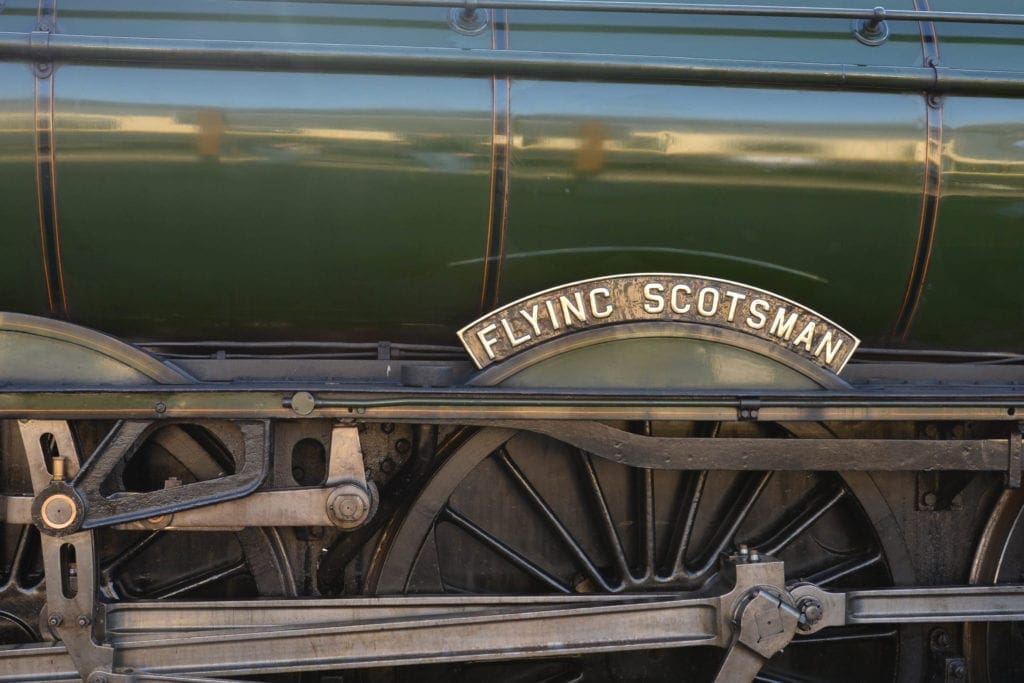
Flying Scotsman is one of the most famous locomotives of all time and it’s easy to see why that’s the case. It was the first locomotive to officially reach 100mph and was the first to cut the journey time from London to Edinburgh to 8 hours.
It was also the first locomotive to run for the London and North Eastern Railway (LNER) and was named after the ‘Flying Scotsman’ service from London to Edinburgh. Although it is an incredibly famous engine, here are some facts that you may not have heard about the locomotive.
It originally cost £7944 to make
By February 22, 1923, when Flying Scotsman first appeared publicly, it had cost £7944 which is equivalent to roughly £326,000 in today’s money. Over the years there has been a lot more money spent on the train to maintain and restore it. When the National Railway Museum bought the train for £2.31m in 2004, they spent a further £4.5m to overhaul it. This makes Flying Scotsman one of the most expensive locomotives in the world.
It has had five different numbers
Although it might be most famously known under its 4472 number, Flying Scotsman has actually had a total of five different numbers. When the locomotive was first created it was the 1472. In 1924, all LNER locomotives were renumbered and Flying Scotsman was given a new number, the iconic 4472.
In 1946 it was briefly renumbered 502 for just five months before settling as the 103 till 1948. In 1948 it was then renumbered the 60103 which is the number it carries today.
It was one of the first locomotives to have a corridor tender
To enable LNER to introduce a new non-stop ‘Flying Scotsman’ service from London to Edinburgh, a new type of tender was created. These new tenders included a corridor for the first time, allowing the changing of crews without stopping.
Previously it had not been easy to get from the coaches to the engine without stopping the train first. Take a glimpse inside the tender in this video.
In 1928 you could get a haircut while travelling
When Flying Scotsman first debuted on the ‘Flying Scotsman’ service, it featured many luxurious services, including a hairdressing carriage! The salon was run by B. Morris & Sons.
For three years Flying Scotsman was the only steam locomotive running on mainline services
In the 1960s, there was an attempt to ramp up the dieselisation of Britain’s railways. To encourage this push, steam locomotives were banned from mainline services in 1968. However, because of a clause in a purchase contract, Flying Scotsman became the singular exception to the ban. In 1971, No.6000 King George V was allowed to run four charter trains before the ban was eventually lifted in 1972.
The locomotive has been heavily modified since creation
Over the locomotive’s lifespan, Flying Scotsman has undergone several overhauls, so much so that not many elements still remain from the original. The only parts remaining from the locomotive that first reached 100mph in 1934 are the rear two-thirds of the frames, part of the cab sides, some parts of the motion, and possibly the driving wheel splashers. Some may argue that the current locomotive is almost on the verge of being considered more of a replica of the original.
You may also be interested in…
There are many locomotives which have shaped the modern world we live in and were known in every household up and down the country, inspiring generations to come.
Legendary Locomotives author and Heritage Railway editor Robin Jones explains which locomotives stand head and shoulders above the rest and how they revolutionised the world of steam for more than a century. Read more.


